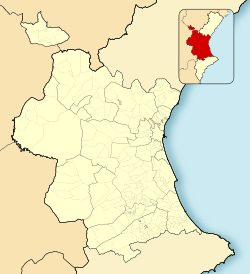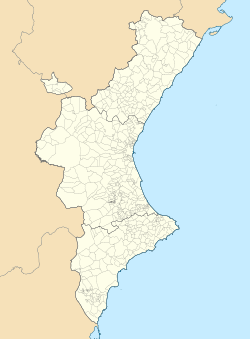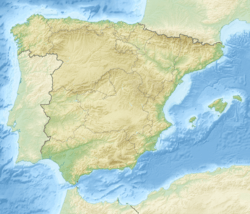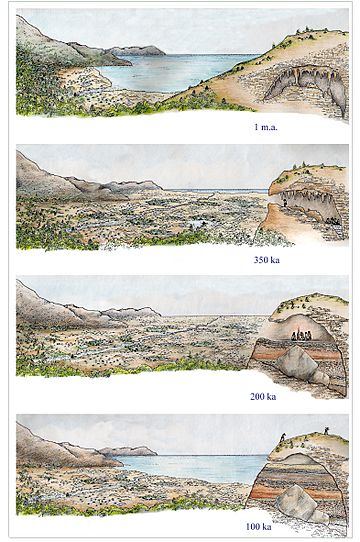Cueva de Bolomor facts for kids
|
Cova del Bolomor (Catalan)
|
|
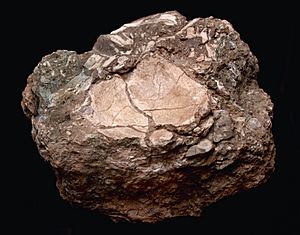
Parietal fragment of Neanderthal, 130,000 yrs. old
|
|
| Location | Tavernes de la Valldigna |
|---|---|
| Region | Valencian Community |
| Coordinates | 39°03′35″N 0°15′00″W / 39.0598°N 0.2499°W |
| Altitude | 100 m (328 ft) |
| Type | Intermittent settlement |
| History | |
| Periods | late Middle/early Late Pleistocene |
| Site notes | |
| Excavation dates | since 1989 |
The Cueva de Bolomor, also known as Bolomor Cave, is an amazing archaeological site. It is located near Tavernes de la Valldigna in the Valencian Community, Spain. This cave was a home for ancient humans a very long time ago.
People lived here off and on between 350,000 and 120,000 years ago. Archaeologists have found four pieces of Neanderthal bones and teeth. These include a leg bone fragment, two teeth, and part of a skull. These finds help us learn about early humans in this area.
Contents
Exploring Bolomor Cave
The cave is found in the La Valldigna valley. Mountains surround this valley. The Les Creus mountains are to the north, and the Mondúver range is to the south. The valley floor is covered with ancient sediments from the Quaternary period.
To the east, the valley opens up to a marshy area near the Mediterranean Sea. Bolomor Cave is on the right side of a cliff. It is a karst cave, which means it formed in soluble rock like limestone. It sits about 100 meters (328 feet) above sea level.
What the Cave Looks Like Now
Today, Bolomor Cave looks more like a rock shelter. It is about 35 meters (115 feet) long and 17 meters (56 feet) wide. The inside is about 20 meters (66 feet) deep and has an uneven shape. Scientists believe it was once a much larger cave.
Its roof likely fell in, perhaps due to earthquakes. From the cave's entrance, you can see the valley and the coastal area. This includes the town of Cullera.
Life in the Cave: What We Found
Archaeologists have dug down through 17 different layers of soil and rock. Each layer tells a story about a different time period. These layers date from 350,000 to 121,000 years ago. People lived in the cave during three main periods:
- Around 350,000 years ago
- Between 200,000 and 150,000 years ago
- Around 120,000 years ago
What Ancient Humans Ate
The people living in Bolomor Cave ate many different animals. They hunted large and small ungulates (hoofed animals). They also ate tortoises and birds. Interestingly, they often ate young elephants throughout all the time periods.
A special discovery is the many rabbit bones found with cut marks. Hunting small, fast animals like rabbits was unusual for this time. This shows that the people here were very skilled hunters. All the food, even young elephants, had to be carried up the steep 100-meter (328-foot) slope to the cave.
Tools and Fire
The people at Bolomor Cave were good at making stone tools. They mostly made tools by chipping flakes off flint stones. They also reused old stone tools. They didn't often use a special tool-making method called the Levallois technique. No large handaxes were found here.
Scientists think this site shows a change in how people lived and made tools. They were moving from older ways to newer, more complex methods. They made tools with specific shapes and sizes. Archaeologists found 15 hearths (fireplaces) in the cave. These hearths are between 250,000 and 100,000 years old. Some of them were even lined with stones!
Studying the Cave's Past
Archaeologists have been digging at Cueva de Bolomor every year since 1989. They usually work for about 30 days each time. The Valencian Council's Prehistoric Investigation Service supports this research. All the amazing things found at the cave are kept and studied at the Prehistory Museum of Valencia.
See also
- In Spanish: Cueva de Bolomor para niños


